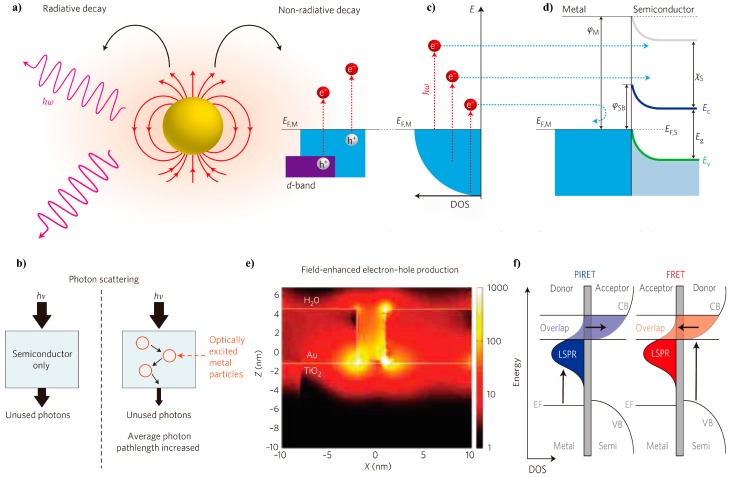Figure 1.
Plasmonic enhancement mechanisms. (a) High-energy resonant state decay in two possible forms: re-emission (scattering) of photons or the generation of energetic charge carriers; (b) scattering mechanism in which multiple reflections of light among nanocrystals prolong the mean photon path in plasmonic nanostructures and semiconductor composites; (c) excitation of electrons from occupied energy levels to a level above the Fermi energy; (d) hot electron overcoming the Schottky barrier and injected to the conduction band of the neighboring semiconductor; (e) optical simulations using finite-difference time-domain (FDTD) showing SPR-enhanced electric fields around photo-excited Au particles, permeating into a neighboring TiO2 structure; electric field intensity normalized by the light source intensity (|E|2/|E|02) shown by the color bar; (f) complementary energy transfer with plasmon-induced resonance energy transfer (PIRET) and Förster resonance energy transfer (FRET) in Au@SiO2@Cu2O. (a,c,d) Reproduced with permission [22]. Copyright 2014, Macmillan Publishers Limited; (b) Reproduced with permission [20]. Copyright 2011, Macmillan Publishers Limited; (e) Reproduced with permission [32]. Copyright 2011, American Chemical Society; (f) Reproduced with permission [33]. Copyright 2015, Macmillan Publishers Limited.

